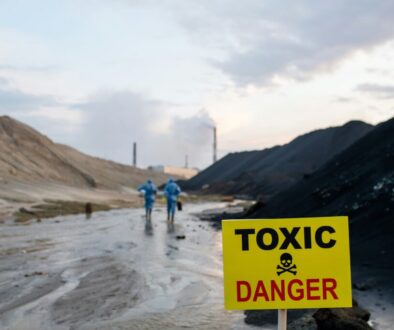When measuring a farm’s carbon footprint – Britain has the right answer

By Dean Dickel
The key to achieving climate mitigation in agriculture depends on an accurate measure of carbon sequestration and emissions of major greenhouse gases such as methane and nitrous oxide.
Mitigation measures so far have revolved around public and private programs that offer payment for practices such as cover crops and no-till planting that industry experts have determined sequester carbon in the soil.
Carbon markets have also been initiated that pay farmers for their conservation practices. Called carbon credits, the payments are used to offset greenhouse gas emissions the buyers produce as a part of their business operations. Those offsets are commonly used to achieve their own climate claims such as “net zero.”
A number of farmers are already participating in these “markets,” but some in the industry remain dubious. “These aren’t markets, they’re just schemes,” says Jeff Schahczenski, an economist with the National Center for Appropriate Technology.
Farmers enrolling in carbon market programs will usually need to sign relatively long-term contracts that include very specific requirements to continue to qualify for payments. “I would advise farmers to have these contracts looked over by a lawyer before signing,” Schahczenski said.
Current “carbon markets” have also drawn fire from organic farmers and others because they mostly reward “new practices” as incentives for farmers to adopt carbon-friendly methods, all the while farmers who are already using those practices, many of them for years, are wondering out loud: “What’s in it for me?” Some have asked how long they would need to go back to bad practices before they would qualify for reinstituting good practices.
Current carbon initiatives available to farmers do not generally consider carbon equivalent emissions for synthetic nitrogen and other fertilizers and pesticides.
In Britain, however, the amount of greenhouse gases such as carbon dioxide and nitrous oxide being emitted and how much carbon is being sequestered in the soil can be measured by a software program that has been in use there for about ten years. The Farm Carbon Calculator is a web-based software program that is available for free to all British farmers, who are able to input data and retrieve results with little or no assistance. It relies on soil organic matter values to generate the gross tonnes of carbon sequestered. To come up with net carbon sequestration, the calculator subtracts the farm’s emissions.
There are three categories of emissions or carbon loss:
- Fuels: which includes diesel along with LP and electricity for drying corn.
- Crops: Carbon is removed from the system by harvesting crops. The calculator uses amount harvested to account for this carbon loss.
- Inputs: Synthetic fertilizers and pesticides are largely produced using fossil fuels. Options for fertilizer use are largely the same in Europe as in the US. Pesticide use is reported in total weight of inert ingredients.
Using basic farm records, the Carbon Calculator can also provide a picture of the carbon footprint for a wide range of livestock operations. Like crops, the data spreadsheet collects information such as the number and class of animals, annual production, manure storage, and feed brought in from other farms.
The final output from the British calculator is reported as net metric tonnes of carbon dioxide equivalent emitted or sequestered per year. The goal is to produce as high a negative number possible.
The Farm Carbon Calculator is one of three programs approved for use in conducting “carbon audits” on British farms. Carbon audits have become almost essential in Britain. Farmers there are heavily subsidized, and those subsidies are increasingly based on environmental aspects such as carbon sequestration and mitigation of greenhouse gas emissions.
The US Department of Agriculture (USDA) is attempting to address ozone pollution through its Climate Smart Agriculture program. Grants through this program are available for innovative on-farm projects and funding for organic farming that includes cost-shares for certification expenses and technical assistance for transitioning farmers.
The idea that organic farming could play a unique role in reversing climate change has been around for some time and was spearheaded by The Rodale Institute, which first released a white paper on the subject in 2014 and updated it again in 2020.
The assessment that agriculture can become the cure instead of the cause of climate change is based on decades of Rodale’s research in organic farming. It has also spurred a new movement called “regenerative organic agriculture,” which is developing its own standards as an adjunct to organic certification.
On-farm carbon audits could become more important as the US market moves toward labeling food products based on the carbon cost to produce them. Large corporation such as Pepsico and General Mills have projects in place to assert claims of net zero carbon and other labeling to appeal to environmentally conscious consumers.
The Farm Carbon Calculator has recently been approved by the European Union for use in carbon labeling. If or when carbon labeling comes to the US, a more accurate measure of carbon footprint will need to be developed.
The British developers of the calculator are interested in introducing it commercially in the US, but it would have to be reformatted to Imperial measure and the climate conditions specific to regions of the US Reprogramming the British Farm Carbon Calculator would likely cost far less than building such a tool from scratch.
But there would be ongoing costs, such as building a US support and development staff and a host location for a server and other necessary hardware. In Britain there is also a governing board and network of sponsors that funds operations.
Even if more accurate and comprehensive carbon audits were available to US farmers, it’s unclear how farmers would be rewarded or penalized for their carbon outcomes. The most likely scenario would be a market-based system where low carbon commodities bring premium prices.
A voluntary market-based approach offers the best chance of motivating farmers to lower their footprint. Right or wrong, the reality is that farmers and the agriculture industrial complex would push back hard against regulation. In Europe, recent farmer protests have centered on just such environmental regulation.
The federal government and American taxpayers do have a vested interest in the outcome. If climate change isn’t brought under control soon, the USDA will be facing enormous liabilities in crop insurance payments to farmers who stand to suffer losses due to extreme weather events as the result of, ironically, failure to act to mitigate damage to the ozone.
Farmers do not have sole power and discretion to control agriculture policy in the US. They are a very small voting bloc, but they do have the lobbying power wielded by ag industry. Still, farm legislation requires support from ever-increasing urban consumer interests.
If the US government were to reassess farm policy, might it be to redirect subsidies the USDA pays out every year to the tune of $25 billion to $40 billion? Instead of the current system that encompasses only a handful of major crops and is based on the number acres a producer controls, could it be based on carbon sequestration? Would a carbon audit be required to qualify for Federal Crop Insurance subsidies? Some have also advocated a “carbon bank” where farmers earn interest for sequestering carbon and farmers shown to be losing carbon are required to pay in.
These are viable paths to mitigating agriculture’s climate impact, but they all require a comprehensive, accurate and fair process for measuring every farm’s carbon footprint.
(Opinion columns published in The New Lede represent the views of the individual(s) authoring the columns and not necessarily the perspectives of TNL editors.)



